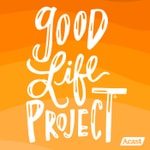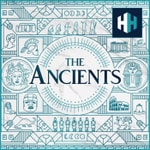Design Emergency – Details, episodes & analysis
Podcast details
Technical and general information from the podcast's RSS feed.

Design Emergency
Alice Rawsthorn and Paola Antonelli
Frequency: 1 episode/21d. Total Eps: 48

Welcome to Design Emergency, where the design curator Paola Antonelli and design critic Alice Rawsthorn will introduce you to the inspiring and ingenious designers whose success in tackling major challenges – from the climate emergency and refugee crisis, to ensuring that new technologies affect us positively, not negatively – gives us hope for the future.
Follow our Instagram @design.emergency to see images of all the design projects described in each episode.
Hosted on Acast. See acast.com/privacy for more information.
Hosted on Acast. See acast.com/privacy for more information.
Recent rankings
Latest chart positions across Apple Podcasts and Spotify rankings.
Apple Podcasts
🇩🇪 Germany - design
01/08/2025#71🇩🇪 Germany - design
31/07/2025#61🇺🇸 USA - design
31/07/2025#70🇩🇪 Germany - design
30/07/2025#64🇺🇸 USA - design
30/07/2025#82🇩🇪 Germany - design
29/07/2025#48🇺🇸 USA - design
29/07/2025#69🇩🇪 Germany - design
28/07/2025#43🇺🇸 USA - design
28/07/2025#91🇩🇪 Germany - design
27/07/2025#36
Spotify
No recent rankings available
Shared links between episodes and podcasts
Links found in episode descriptions and other podcasts that share them.
See all- http://acast.com/privacy
549 shares
- https://www.limboaccra.online/
2 shares
- http://www.adjaye.com
1 share
RSS feed quality and score
Technical evaluation of the podcast's RSS feed quality and structure.
See allScore global : 89%
Publication history
Monthly episode publishing history over the past years.
Jeanne Gang on Architectural Grafting
Season 3 · Episode 11
mardi 16 juillet 2024 • Duration 38:27
As architecture and construction are two of the biggest sources of carbon emissions on our planet, what can architects do to change this? In this episode of Design Emergency, the US architect, Jeanne Gang, tells our cofounder Alice Rawsthorn how she and her colleagues at Studio Gang in Chicago are designing new ways of reusing and repurposing existing buildings, as an ecologically responsible alternative to building new ones, through a process she calls “architectural grafting”.
.
Jeanne is a prolific and ingenious architect whose work at Studio Gang includes: the Arkansas Museum of Fine Arts and the Gilder Center for Science, Education and Innovation at the American Museum of Natural History in New York. Among Jeanne’s projects currently being designed or under construction, are the new US Embassy in Brasilia and the Global Terminal at Chicago O’Hare Airport.
.
She describes the defining theme of her practice as being to make “architecture that strengthens kinship among people, their communities and the natural world”. All Jeanne’s work is steeped in her research at Studio Gang, including an experimental project to protect the one billion-plus birds that die in the US each year after crashing into high-rise buildings, and as a Professor in Practice at the Harvard University Graduate School of Design, where her teaching focuses on the theories of reuse and resilience that she explores in her latest book, The Art of Architectural Grafting.
.
We hope you’ll enjoy this episode. You can find images of Jeanne and her work on our Instagram @design.emergency. Please join us for future episodes of Design Emergency when we will hear from more inspiring and ambitious global design leaders at the forefront of positive change.
.
Design Emergency is supported by a grant from the Graham Foundation for Advanced Studies in the Fine Arts.
Hosted on Acast. See acast.com/privacy for more information.
Liam Young on building better worlds
Season 3 · Episode 10
mercredi 26 juin 2024 • Duration 38:09
Visions of future worlds by storytellers of all kinds––filmmakers, writers, designers, and other artists––play an important role in our evolution. Whether they are utopias or dystopias, visual or verbal, they invite us to imagine what we could make of ourselves and of our planet, for good and for bad. Australian architect Liam Young is among the most respected and effective contemporary speculative designers and world-builders, focusing on the imagination of better worlds in which humankind recognizes its place and responsibility within nature––climate fiction.
The climate crisis is real, and real ideas and solutions need to be implemented with urgency. The citizens of the world need awareness to pressure the powers that be and demand action, and even engineers and scientists need inspiration. However far-off they may seem, Liam’s visions are based on current and available technologies, which he studies in depth to mine their positive attributes and attenuate their dangers.
Liam, who is based in Los Angeles and often collaborates with Hollywood productions as world-builder, discusses his personal practice, which explores the intersections of technology, culture, and the environment to create immersive narratives that envision alternative futures. By delving into two of his epic works––Planet City and The Great Endeavor––he explains how world building can shape our understanding of potential realities and inspire solutions to contemporary global challenges.
You can find images of Liam’s work on our Instagram grid @design.emergency. Please join us for future episodes of Design Emergency when we will hear from other global design leaders who, like Liam, are at the forefront of positive change.
Design Emergency is supported by a grant from the Graham Foundation for Advanced Studies in the Fine Arts.
Hosted on Acast. See acast.com/privacy for more information.
Anjali Singhvi on investigative visual journalism
Season 3 · Episode 1
mercredi 24 janvier 2024 • Duration 37:04
“Investigative visual journalism is a fairly new discipline that combines traditional investigative reporting techniques with digital forensic and spatial analysis of evidence,” says Anjali Singhvi, senior staff editor for spatial investigations at The New York Times in this Design Emergency podcast interview with our cofounder, Paola Antonelli. “It involves using a lot of open-source visual materials such as photos, videos, data, drawings, architectural plans, to explain complex stories and to reconstruct news events.”
.
In this episode, Anjali tells Paola how she has drawn on her background in architecture, and the journalistic skills she has honed at The New York Times, to pioneer its use of the rapidly expanding field of using spatial investigations to uncover the truth about tragedies, disasters and human rights abuses. She also describes how she and her colleagues communicate their findings to readers using story-boarding, 3-D modelling and data visualization techniques to present clear, precise and compelling analyses of horrific events such as the impact of the Tulsa Race Massacre in 1921 and a horrific fire in a Bronx apartment building that killed 17 people. “The goal,” says Anjali, “is to hold the people in power accountable and to give our readers the greater visual understanding of a news event.”
.
Thank you for joining us. You can find images of Anjali and her work on our Instagram grid @design.emergency. And you can tune into this episode of Design Emergency and others on Apple, Spotify, Amazon and other podcast platforms
.
Design Emergency is supported by a grant from the Graham Foundation for Advanced Studies in the Fine Arts.
Hosted on Acast. See acast.com/privacy for more information.
Olalekan Jeyifous on eco-fiction and world-building
Season 2 · Episode 15
jeudi 14 décembre 2023 • Duration 32:48
What could - and should - our future look like? Olalekan Jeyifous is committed to designing irresistible visions of a future in which humanity makes the best out of its many mistakes and thrives within the strictures of its self-inflicted handicaps. By doing so, he has had a remarkable effect on the architecture world - and beyond.
From the Venice Architecture Biennale, where he won the Silver Lion in 2023, to the Museum of Modern Art, his work always delights and puzzles. Could these really be our futures? In this episode of the Design Emergency podcast, Olalekan tells our cofounder, Paola Antonelli, his idea of utopia and the role of speculation in guiding us towards positive change.
Nigerian-born and Brooklyn-based, Olalekan puts his architectural training to good use and imagines our old cities reframed on new systems of communication, transportation, occupation, and exchange. He describes them all in rich visual detail with immersive collages, videos, objects, and even VR experiences. The characters in his tableaus are often smiling, gregarious, in charge of their destinies, imaginary and yet familiar. His communities are strong, and his economies an enticing mix of informality and creatively structures.
You can find images of Olalekan and his work on our Instagram grid @design.emergency. Please join us for future episodes of Design Emergency when we will hear from other global design leaders who, like Olalekan Jeyifous, are helping us to envisage and, to build, better futures.
Design Emergency is supported by a grant from the Graham Foundation for Advanced Studies in the Fine Arts.
Hosted on Acast. See acast.com/privacy for more information.
Claudia Chwalisz on design and democracy
Season 2 · Episode 14
mercredi 29 novembre 2023 • Duration 46:19
At a time when democracy is under threat in many places, what can design do to defend it? How can it help to reinvent our democractic systems and make them fit for purpose? In this episode, author and activist, Claudia Chwalisz tells Design Emergency’s cofounder Alice Rawsthorn why and how she is leading a global campaign to redesign democracy as founder and CEO of the international non-profit research and action institute, DemocracyNext.
Born in Canada to a Polish family, Claudia has devoted the last decade to re-imagining democracy, first through her work at the Organisation of Economic Cooperation and Development (OECD) in Paris and, for the past year, with her colleagues and collaborators at DemocracyNext. Claudia explains how DemocracyNext is championing citizens assemblies as inclusive and deliberative forms of decision making, like those that debated the legalisation of abortion and same sex marriage in Ireland, and assisted dying in France. She discusses the role of sortition (randomly selecting decision-makers by lottery) to making our democratic systems fairer, and describes why design is a crucial tool in this process.
.
Thank you for joining us. You can find images of Claudia and her work on our Instagram @design.emergency. Please join us for future episodes ofDesign Emergency when we will hear from other global design leaders who, like Claudia, are forging positive change.
.
Design Emergency is supported by a grant from the Graham Foundation for Advanced Studies in the Fine Arts.
Hosted on Acast. See acast.com/privacy for more information.
Omar Degan on architecture and fragility
Season 2 · Episode 12
mercredi 15 novembre 2023 • Duration 30:23
Our world is becoming ever more fragile, as more and more migrants across the planet from the country to booming cities, and as more and more refugees are displaced from their homes to makeshift emergency villages that become permanent and expand uncontrollably. What can architecture do to address this? In this episode of Design Emergency, our cofounder Paola Antonelli interviews the Italian-born, Somali architect Omar Degan about his work in using design to support vulnerable communities.
.
Omar tells Paola how he and his team at DO Architecture and Design are focusing on specialize emergency architecture, and post-conflict reconstruction. Their work, in Mogadishu and beyond, reflects Omar's belief in using architecture as a tool for peace and progress in distressed areas. Following his post-graduate degree in Emergency Contexts and Developing Countries from the Polytechnic of Turin, Italy, Omar has specialized in developing culturally and historically relevant design solutions in fragile contexts. He co-founded FragilityLab in 2023 to focus on this and is currently at work on an expanded version of the United Nations guidelines for architecture in states of emergency.
You can find images of Omar and his work on our Instagram grid @design.emergency. Please join us for future episodes of Design Emergency when we will hear from other global design leaders who, like Omar, are forging positive change.
Design Emergency is supported by a grant from the Graham Foundation for Advanced Studies in the Fine Arts.
Hosted on Acast. See acast.com/privacy for more information.
Aqui Thami on design and communities
Season 2 · Episode 11
mercredi 1 novembre 2023 • Duration 43:26
How can design help to heal fragile people, who have experienced abuse, poverty and oppression? In this episode, the Indian artist, activist and social designer Aqui Thami tells Design Emergency’s cofounder Alice Rawsthorn how she does this by designing new opportunities for healing and learning for vulnerable women and girls, for and trans and queer people.
Aqui has personally experienced violence and bigotry as a janjati, or indigenous artist, who was born in the Himalayas. She tells Alice how since moving to Mumbai on her own as a teenager, she has addressed this by designing and delivering safe spaces and other urgently needed resources for people living in Dharavi, which is one of India’s biggest and most densely populated slums.
As well as establishing Sister Library, South Asia’s first mobile, community-owned and run feminist library there, Aqui co-founded the Dharavi Art Room to provide art, design and craft classes for local women and children. She also pursues her activism by designing and printing zines and fly posters as part of the Bombay Underground publishing movement.
At a time when India, Mumbai and Dharavi are changing at frenzied speed, Aqui explains to Alice how she plans to continue to use design as an activist tool to empower her friends, neighbors and collaborators and to help them to preserve their communities.
Thank you for joining us. You can find images of Aqui and her work on our Instagram grid @design.emergency. Please join us for future episodes of Design Emergency when we will hear from other global design leaders who, like Aqui, are at the forefront of positive change.
Design Emergency is supported by a grant from the Graham Foundation for Advanced Studies in the Fine Arts.
Hosted on Acast. See acast.com/privacy for more information.
Veena Sahajwalla on turning waste into new materials
Season 2 · Episode 10
vendredi 20 octobre 2023 • Duration 32:33
As the climate emergency escalates, it is clear that the solutions we need are those that can be applied at scale. The materials scientist Veena Sahajwalla is at the forefront as she is already designing and delivering such solutions. In this episode, Veena tells Design Emergency’s cofounder, Paola Antonelli, how she is recycling huge quantities of abandoned tyres, clothing and other waste into new materials.
.
Born in India, where she was the only woman on her university engineering course, Veena then studied in Canada and the US, and is now based in Australia, where she is Professor of Materials Science at the University of New South Wales and founding director of its SMART Centre for Materials Research and Technology. Dubbed “the rubbish cop” by her daughter for her obsession with reusing and recycling waste at home, her work is devoted to developing new ways of transforming waste into new raw materials to decarbonise industrial production.
.
Veena explains to Paola how she has invented a polymer injection technology, Green Steel, which has already recycled millions rubber tyres to replace coal in steel production. She also describes how she and her colleagues have developed a process of recycling clothes and glass into Green Ceramics for use in construction and interiors, and a new type of local micro-recycling hubs. All of which, Veena sees as being important steps towards a zero-waste circular economy.
.
Thank you for listening. You will find images of projects described by Veena on our IG grid @design.emergency. And you can tune into this episode of Design Emergency and the others on Apple, Amazon, Spotify and other podcast platforms. Please join us for future interviews with other global design leaders who are forging positive change.
.
Design Emergency is supported by a grant from the Graham Foundation for Advanced Studies in the Fine Arts.
.
Hosted by Acast. See acast.com/privacy for information.
Hosted on Acast. See acast.com/privacy for more information.
Fernando Laposse on the materials of design
Season 2 · Episode 9
mercredi 4 octobre 2023 • Duration 25:30
In this episode, the Mexican designer Fernando Laposse talks with our cofounder Paola Antonelli about his practice, which focuses on the culture and the materials of non-urban communities, especially in his native Mexico. After studying product design, Fernando has focused his practice on working with rural communities in Mexico to develop new design materials from locally grown plant fibers, such as sisal, loofah and corn leaves, using processes that are steeped in the traditions of those places.
.
Fernando’s interest in Mexico’s ecosystems has led him to find new ways of transforming natural materials such as corn husks into laminated marquetry used for wall coverings, lighting, and furniture, always collaborating with local communities on their production. This allows him not only to create long term employment opportunities but to shed light on the economic and ecological challenges they face .
Through his thoughtful, extensively researched projects, Fernando addresses pressing issues such as the environmental emergency, loss of biodiversity, community fragmentation, migration, and the adverse impact of global trade on local agriculture and food culture. By documenting these issues and celebrating the transformative power of design, he provides insights and potential solutions.
You’ll find more images of the projects described by Fernando in this episode on Design Emergency's IG grid @design.emergency. And you can tune into this episode of Design Emergency and the others on Apple, Spotify, Amazon, Acast, and other podcast platforms.
Design Emergency is supported by a grant from the Graham Foundation for Advanced Studies in the Fine Arts.
Hosted on Acast. See acast.com/privacy for more information.
Magdalene Odundo on pots
Season 2 · Episode 8
mercredi 20 septembre 2023 • Duration 47:16
Magdalene Odundo has made some of the greatest pots of our time. In this episode of Design Emergency, she talks to our cofounder, Alice Rawsthorn, about how she discovered the joys and challenges of making ceramics and their symbolic value in expressing our cultural identities.
Born in Kenya in 1950, Magdalene spent her childhood there and in India before moving to the UK to study art in Cambridge, where she flung herself into student debates on identity politics. She then studied at what is now the University for the Creative Arts in the Surrey market town of Farnham and at the Royal College of Art in London. As well as being formally beautiful, Magdalene’s pots are rooted in her love of making and her understanding of the politics of her own identity, as Black African woman living in Europe, and her years of research into the ancient ceramic traditions of Africa, Asia and Central America.
Magdalene tells Alice how she draws on that research to reinterpret historic forms, finishes and firing processes in her pots that evoke the drama and fragility of dance. Her ceramics belong to the collections of major museums, including the British Museum and V&A in London, the Art Institute of Chicago and The Met in New York. Yet she still lives and works in the same place in Farnham, where, after years of dedicated teaching, she has become Chancellor of the University for the Creative Arts.
Thank you for joining us. You can find images of Magdalene and her work on our Instagram grid @design.emergency. And you can tune into this episode of Design Emergency and others on Apple, Spotify, Amazon and other podcast platforms. Please join us for future episodes when we will hear from other global leaders in different areas of design.
.
Design Emergency is supported by a grant from the Graham Foundation for Advanced Studies in the Fine Arts.
Hosted on Acast. See acast.com/privacy for more information.









